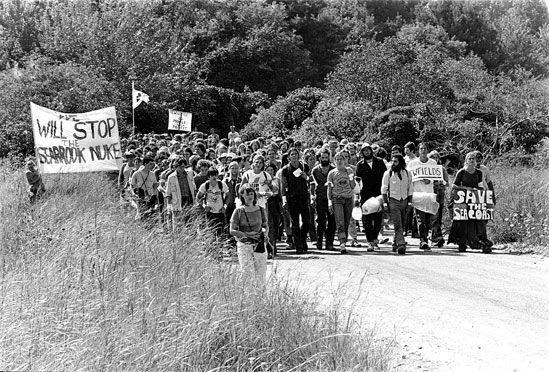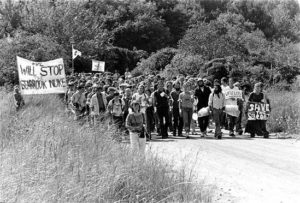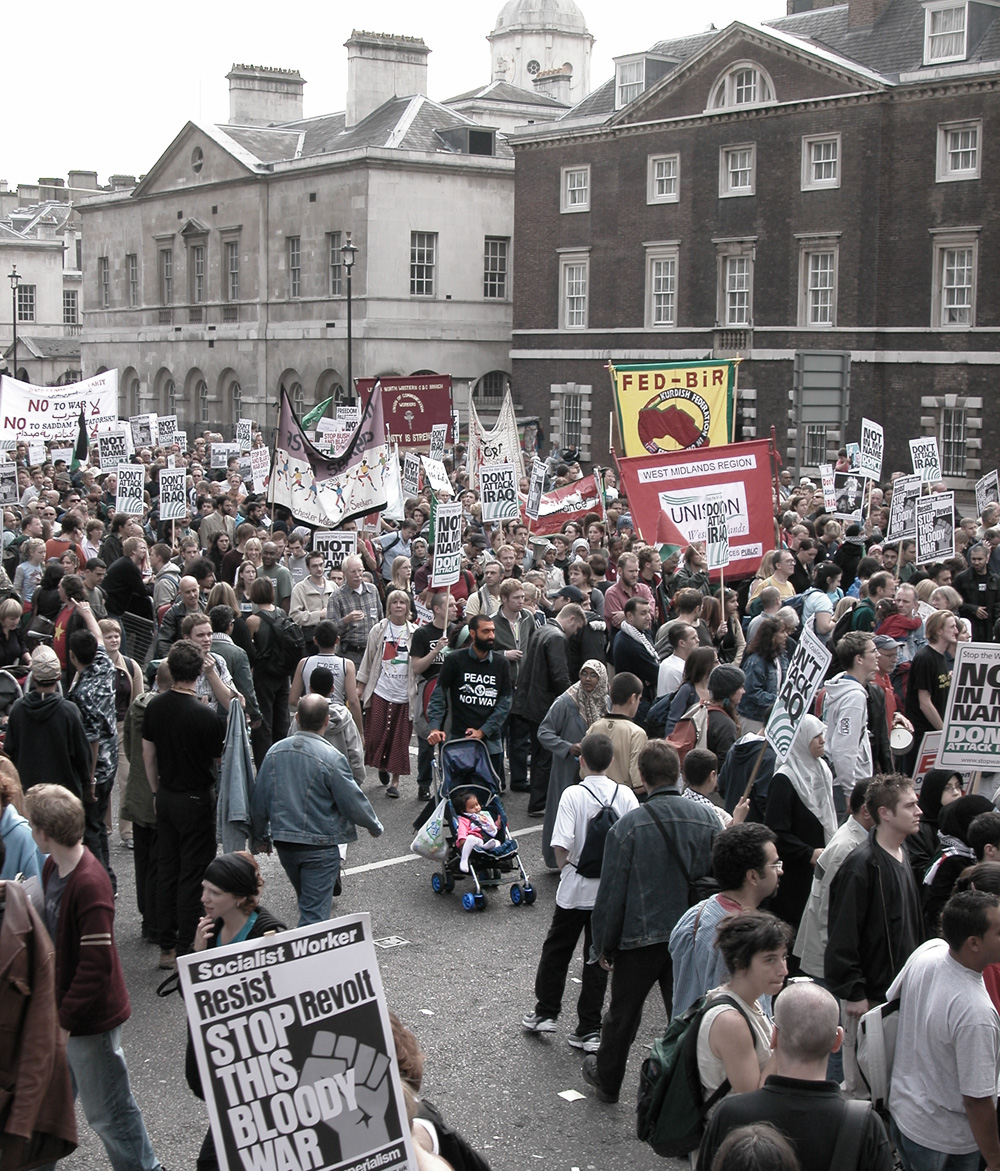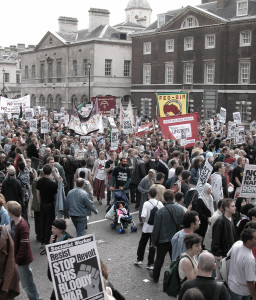Today is Election Day in the United States. And something like the 7th week of the Occupy Wall Street/Occupy Everywhere movement that sprung up in September.
A good day to reflect on different social change strategies—as someone who’s done both grassroots and electoral politics.
I began to get involved in grassroots movements in the fall of 1969, shortly before my 13th birthday. I marched to end the war in Vietnam, was arrested at the 1977 Seabrook occupation trying to shift society away from nuclear power and toward safe energy, and organized on a whole raft of social justice, environmental, and human rights issues over the decades. I even founded the grassroots community group that saved a mountain. This activism led directly to my career as a marketing consultant; much of my early work in marketing drew on my experience doing publicity for the grassroots groups, and my move toward green marketing in the last 12 years or so is a natural outgrowth of my need to braid together these two stands of my life: the activist and the entrepreneur.
On the electoral side, I’ve been an active volunteer on numerous campaigns, managed a successful City Council campaign, wrote press releases for a successful mayoral candidate—and ran three times for local office.
Nonviolent Action Brings Down Governments
This year, we’ve once again seen massive evidence of the power of grassroots nonviolent activism to bring down governments. In Tunisia and then Egypt, deeply entrenched autocratic governments were forced out. (Libya, which was more of a civil war, lots of violence on both sides, is a different case.) Historically, this pattern has shown itself countless times, though often taking much longer to achieve victory. A few worth mentioning: India, 1930s-40s; South Africa, 1976-94; Poland, Czech Republic, and much of the former Soviet bloc, 1968-1990. And yes, we have to put the 1979 revolution in Iran in this category, showing that active nonviolence can be used toward authoritarian as well as democratic ends.
And this is important to note: activists have to have a plan for victory, and for safeguarding the democracies we fight so hard to establish. I’m very concerned right now that Egypt’s new government will prove just as authoritarian as Mubarak’s.
Also, we have to note that nonviolent organizing doesn’t always work. American protestors opposing World War I accomplished very little (though the feminists of the same period accomplished quite a bit). Tibet is still deeply repressed by China, more than 50 years into the occupation.
The Occupy Movement and the Broader World of US Social Protest
While the Occupy protests owe much to this long heritage of nonviolent action, the demands on Wall Street are different than the demands of Arab Spring. The 99 percenters are not looking to toss out the Obama government. They are simply calling for economic justice. They’ve been criticized in mainstream media for a lack of a cohesive vision, but in this situation, a simple cry for justice may be enough.
While inspired by Arab Spring, Occupy’s real roots are in the issue campaigns in the US going back at least into the 19th century: labor, civil rights, peace, feminism, LGBT, safe energy, and so forth—and decision-making structures, especially, owe much to Clamshell Alliance and other players in the 1970s safe energy movement. All of these movements can point to massive victories—to cultural changes. The kinds of oppressive behavior that were considered normal a few decades back are no longer socially acceptable.
Yet many other movements like these also failed to make a difference. The more people in the Occupy movement who can take the time to study what worked and didn’t work in social movements, the more likely they are to achieve their goals.
Electoral Politics
If the process of organizing in the streets seems slow, the process of moving change forward by electing progressives seems glacial. For every Franklin Roosevelt or Ronald Reagan who is able to accomplish enormous structural change while in office, there are dozens of Jimmy Carters and Bill Clintons, hamstrung by budgetary constraints, partisan warfare, and their own desire to please everyone (pleasing no one in the process).
I’m not just talking about presidents. Most people enter Congress, or even local political bodies, out of a desire to do good in the world, and are quickly beaten down by the system (or corrupted by the platform it provides to enrich themselves, their financial backers, and their friends). For every fire-and-brimstone Bernie Sanders, there are dozens in office whose names we don’t even know unless we live in their districts—people who are not making much of a difference.
A charismatic figure like Barack Obama can galvanize support and get elected—but then has to either show real progress, fast, in a social structure that moves painfully slowly and is steered by forces outside the victor’s control, or show how the opposition’s intransigence is a roadblock to progress and press for a larger, stronger governing coalition. So far, Obama hasn’t risen to the challenge, though he’s showing signs of moving in that direction. He could still become one of our great presidents—but in failing to act, he risks becoming a one-term nonentity that dashed the hopes of those who voted for change and didn’t receive it.
Occupy Wall Street actually presents Obama a huge opportunity: to embrace the progressive agenda he was elected to advance, to use the anger of the people in the streets to “have his back” as he pushes for real change, and to negate the arguments of Tea Partiers and other right-wing extremists that his minor reforms are “going too fast.” I doubt he’ll seize the moment, but I’d love to be proven wrong.









